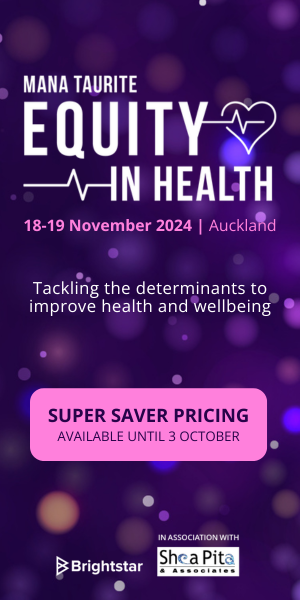Incident reporting has many facets. I remember a registered nurse (RN) telling me she had left a private hospital because of the bullying behaviour of one of the surgeons. The nurse had taken her concerns to the hospital manager who told her there was nothing they could do about it because “the surgeon brought in the patients [to the facility]”.1 The power imbalance was overwhelming for this nurse.
Were there implications for patient safety in this scenario? Possibly. There certainly were for staff safety. The nurse didn’t feel supported by the management – or her peers – who did not want to get involved. She left knowing she had at least informed the hospital’s management about the surgeon’s behaviours. The hospital lost an experienced nurse through unsatisfactory processes.
Incident reporting is an accepted, but inconsistently applied, record of things that went wrong, or might have gone wrong, in the public health system. The Health Quality & Safety Commission (HQSC) is charged with the national reporting of adverse events in the health sector.
Of the nearly 190,000 discharges in private surgical hospitals in 2017/18, New Zealand Private Sector Hospitals Association (NZPSHA) members reported 91 adverse events.2 In comparison, in the country’s 20 district health boards (DHBs), there were 891,837 inpatient discharges for the 2017/18 year,3 with 631 adverse events reported – an average of 30 events per DHB.4 Only 31 of that total were “health-care associated infections”.4
How effective is the HQSC’s adverse events reporting? In 2017/18, only one adverse event was reported from the primary health care sector. The HQSC notes the need to “actively engage with the aged residential care (ARC) and primary care sectors to improve reporting and management of adverse events in these areas.”4
It is worth noting adverse events in ARC were either not reported or were grouped within the nine events in the “other providers” category in this same report.4
Commenting on the above data, the HQSC writes that the DHB numbers are “well below the total that could be expected” indicating that “providers are only identifying and reporting a small percentage of adverse events that actually occur”.4
Surgical site infections (SSEs) are very costly and can often be prevented. The HQSC’s surgical site infection improvement programme reports that, from October to December 2017, DHBs performed 2717 hip and knee arthroplasty procedures. Thirty-five SSIs were reported, a rate of 1.3 percent.5
The SSII programme began in 2012. It only covers the DHBs, not private surgical hospitals, yet is designed to help prevent “emotional and financial stress, serious illness, consequences for patients, as well as health services” caused by SSIs.6 Why are private hospital patients not entitled to the same level and quality of reporting?
Reporting is voluntary
The public may well ask why the reporting of adverse events and SSIs is voluntary. Former HSQC chair Alan Merry states that “it is important that health-care providers enable a just culture where staff can report patient harm, confident that the response will be to focus on learning rather than attributing blame”.4
Shouldn’t the Ministry of Health require a much more focused approach to these ongoing national issues, rather than accepting the under-reporting of adverse events? Adverse events are, after all, primary indicators of inadequacies in health care.
This weak data should prompt health professionals to lobby the Government to make transparent, comprehensive reporting of adverse events a priority for the HQSC.
Little progress
A 2010 review on the HQSC’s website shows how little progress has been made in achieving a nationally consistent approach to incident reporting. That review speaks to a 2007 DHB project that was unable to meet the overall project goal “to achieve a nationally consistent approach to incident management across all health and disability services in New Zealand”.7 Thirteen years later this goal has yet to be achieved.
Also on the HQSC website is a 2016 literature review of international patient safety reporting.8 It is wide-reaching and provides easily understood details for best-practice for both local and national systems.
Health professionals must be equipped and encouraged to learn from adverse events, but the current system appears to encourage under-reporting.
Health information systems must be put in place to support patient safety reporting systems.9 As health professionals, we owe it to patients and their whānau to learn from our collective mistakes and advocate for more robust patient safety systems.
References
- Personal communication. (n.d.)
- The New Zealand Private Surgical Hospitals Association. (2020).
- Ministry of Health (2019). DHB Caseload Monitoring Report (PDF, 1010 KB).
- Health Quality & Safety Commission. (2018). Learning from adverse events: Adverse events reported to the Health Quality & Safety Commission (PDF, 1.16 MB).
- Health Quality & Safety Commission. (2018). Surgical site infection improvement programme: National orthopaedic surgery report 1 October-31 December 2017.
- Health Quality & Safety Commission (2020). Surgical Site Infection Improvement.
- Hefford, M., & Downward, G. (2010). National quality improvement programme review: Incident Management (PDF, 436 KB).
- Health Quality & Safety Commission. (2016). Patient safety reporting systems: A literature review of international practice (PDF, 667 KB).
- Dumble, F., Miller, J., Poynter, M., & Shoemack, P. (2020) While we have your attention (editorial). New Zealand Medical Journal, 133(1514), 7-9.



